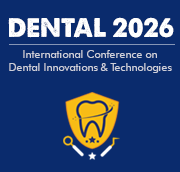Root canal treatment
Root canal treatment is a dental procedure used to repair and save a tooth that is badly decayed or infected. The procedure involves removing the damaged area of the tooth, cleaning and disinfecting it, and then filling and sealing the area. During the treatment, the dentist removes the damaged nerve tissue, or pulp, from inside the tooth. The dentist then cleans and shapes the tooth’s root canals, and places a filling to seal them. Root canal treatment is the only way to save a tooth that has been badly decayed or infected. Without treatment, the tooth will eventually need to be removed. Root canal treatment can help to reduce pain and discomfort associated with an infected tooth, as well as prevent infection from spreading to other teeth or other parts of the body. The procedure begins with the dentist taking an X-ray of the tooth to determine the shape and extent of the damage. Then, the dentist will numb the area with an anesthetic and make an opening in the tooth to access the pulp chamber and root canals. The dentist will then use special instruments to clean and shape the canals and remove any remaining infected tissue. Once the canals are prepared, the dentist will fill the canals with a medicated material to fill the space and prevent new infection. Finally, the dentist will fill the opening with a filling material, such as a crown or an artificial tooth. Root canal treatment can be a lengthy and complex procedure, but the benefits far outweigh the risks. In most cases, the procedure is successful in saving the tooth and restoring its function. The treated tooth may require additional care or treatment in the future, but it is likely to remain strong and healthy for many years.

David Geoffrey Gillam
Queen Mary University of London, United Kingdom
Zvi Loewy
New York Medical College, United States
Khamis A Hassan
Global Dental Research Centre, Canada
Laurindo Moacir Sassi
Erasto Gaertner Hospital Cancer Center and Mackenzie Evangelical University Hospital, Brazil
Arnaldo Castellucci
Dr. Castellucci MD, DDS, Italy
Yasser Khaled
Marquette University, United States



Title : Efficacy of a biomin F toothpaste compared to conventional toothpastes in remineralisation and dentine hypersensitivity: An overview
David Geoffrey Gillam, Queen Mary University of London, United Kingdom
Title : Knowledge and attitudes of dental professionals in the evaluation of Molar Incisor Hypomineralisation (MIH): Awareness, diagnosis and treatment approaches: An overview
David Geoffrey Gillam, Queen Mary University of London, United Kingdom
Title : The coordinated triad of spatial temporal and biomechanical strategies managing the where when and how of shrinkage stress in bulk fill resin composite restorations
Khamis A Hassan, Global Dental Research Centre, Canada
Title : Dental treatment of 1500 young children under general anesthesia
Jaap Boehmer, Rijnstate Hospital, Netherlands
Title : Enhancing root canal success strategic use of orifice opener one step synthesis gels orifice barriers
Emmanuel Samson, Consultant Total Dental Care, India
Title : Importance of clinical pharmacokinetics of medications in the postoperative period of patients undergoing dental surgical procedures
Vitoldo Antonio Kozlowski Junior, Ponta Grossa State University, Brazil